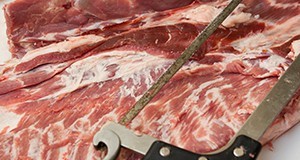Abstract
Meat with an abundance of connective tissue presents a certain challenge to cooks who want to make it more tender while still properly eliminating pathogens that cause foodborne illness. Sous vide cookery provides precise temperature control and tenderness improvement with minimal supervision throughout cooking as well as consistent, almost perfect reproducibility. This 4-page fact sheet introduces the reader to the sous vide method and covers its advantages and necessary equipment. The piece also offers tips on cooking, chilling, storing, and reheating large cuts of meat. Written by Chad Carr, Derek Griffing, Kaylie Madore, Dwain Johnson, Jason Scheffler, and João Neto, and published by the UF Department of Animal Sciences, September 2015.
AN320/AN320: Sous Vide Cookery: Foodservice Application for Larger, Less Tender Cuts (ufl.edu)
References
Baldwin, D. E. 2012. "Sous vide cooking: a review." International Journal of Gastronomy and Food Sci. 1: 15-30. https://doi.org/10.1016/j.ijgfs.2011.11.002
Christensen, L., P. Ertbjerg, H. Loje, J. Risbo, F. W. J. Van Den Berg, and M. Christensen. 2013. "Relationship between meat toughness and properties of connective tissue from cows and young bulls treated at low temperatures for prolonged times." Meat Science 93: 787-95. https://doi.org/10.1016/j.meatsci.2012.12.001
Gill, C. O. 1979. "Intrinsic bacteria in meat." Journal of Applied Bacteriology 47: 367-78. https://doi.org/10.1111/j.1365-2672.1979.tb01196.x
Gould, G. W. 1999. "Sous vide food: conclusions of an ECFF botulinum working party." Food Control 10: 47-51. https://doi.org/10.1016/S0956-7135(98)00133-9
Peck, M. W. 1997. "C. botulinum and the safety of refrigerated processed foods of extended durability." Trends in Food Sci. & Tech. 8: 186-92. https://doi.org/10.1016/S0924-2244(97)01027-3
Suriaatmaja, D., and T. C. Lanier. 2014. "Mechanism of meat tenderization by long-time low-temperature heating." Masters Thesis, North Carolina State University, Raleigh, NC. https://doi.org/10.1016/j.meatsci.2013.07.073

